If you are a passionate vegan like me, the thought of growing your vegetables would have probably crossed your mind once or twice. Today I have five tips for growing your vegetables on your balcony thanks to the folks at Love Backyard.
1. Assess the Physical Condition of your Balcony

Usually, balconies facing southwest get full sunlight for most of the days. However, buildings or walls my obstruct sunlight on some part of your balcony space. Hence, you need to assess, how many hours of direct sun remain on the space, you intend to grow vegetables. You can do this with a watch or by using a gizmo, called sun calculator.
Assess the timing of the growing season because the movement of the sun varies from winter to summer. Also, consider the heat because all plants can’t bear with extreme heat to which your balcony may usually be subjected to. For instance, lettuce and endive won’t thrive in extreme heat, whereas succulents can. Also, the quality and the taste of endives and lettuce improve with adequate sunlight.
If your balcony is exposed to heavy wind, select the wind tolerant plants. Avoid growing tender plants. You can create windbreaks to protect fragile plants. Coldness is another factor for consideration if you want the plants to grow throughout the year. Check your USDA Plant Hardiness Zone.
- Select plants that are rated two zones more cold tolerant than the rating of your zone.
- Choose the vegetables; you like to eat, based on the number of hours of sunlight your balcony gets in a day. Note: tomatoes, cucumbers require 5 to 8 hours of sunlight for a good growth and yield.
- If your balcony is shaded partially and sunlight is insufficient, you may choose kale, chard, and lettuce.
- You can find information regarding the amount of sun required, from the seed packets or seedlings.
TIP: If you lack space for your vegetable garden, you can also have a “hanging garden” on your balcony, as long it gets enough sunlight.
2. Select the Right Containers

Choose appropriate containers or pots, according to the root lengths the fully grown plants. For instance, peppers, greens, and lettuce have shallow roots and need containers of around 20 cm depth. Tomatoes have a larger root system and require a container of around 19 litre capacity. You can choose containers made of ceramic, clay, and cement, food grade plastic or wood. Make a hole below the containers for drainage of excess water.
3. Plant using Soil, Fertilizer, and Water

Along with soil, fill three fourth of the pot with organic container mix. If you are planting a seed, put it in the hole, twice as deep as its diameter. If you are planting a seedling, dig a hole, as deep as its diameter. After placing the roots in the soil, cover it with container mix and a little compost. Water the container thoroughly after planting and then daily, as the soil dries down quickly.
4. Add Fertilizer Regularly

Organic fertilizer is vital to achieving next-to-perfect gardening soil. As the plants don’t get their usual nutrients from the soil, put fertilizer on the containers, every month. You can dig a small amount of compost or organic fertilizer, as per availability.
It will help in enhancing the nutrients holding capacity and water content of your vegetables and plants. It will also aerate and loosen the quality of your clay soil.
5. Utilize Vertical Space and for Aesthetic Arrangements of Pots

Space being the main constraint, optimize the use of your vertical space. Hang planters on the wall and grow vegetable vines and shrubs like beans, tall tomatoes, squashes, gourds, near the railings and walls.
Arrange the pots symmetrically, according to their sizes so that they have an aesthetic look, such as putting the larger pots behind, the smaller ones.
Vegetable inspired Dinner

Here are some delicious plant-based recipes you can try to showcase the delicious flavour of fresh vegetables:
- Asparagus pasta and Portabella; Supplemented: Add a few sun-dried tomatoes, green-side salads, and some toasty garlic bread to your portobello and asparagus pasta for transforming to an ordinary pasta recipe. Read full recipe here.
- Irish Apple and Potato Mash: Although best suited for the celebration of St Patrick’s Day, you can find this odd combination of Irish apples and mashed potatoes an equally good match for the Easter recipe. Read full recipe here.
- Ginger Carrot Soup: This recipe is nutritious and tasteful, with a touch of sweetness and spice. The addition of a dollop soy yogurt and vegan sour cream to take it to the next level or creaminess. Read full recipe here.
- Creamy Artichoke Lemon Pastas: To make it special for the Easter, add mushrooms or few sun-dried tomatoes to this creamy artichoke lemon pasta. Read full recipe here.
- Tofu Artichoke Risotto: This can be a delicious one for the entire family; the tofu artichoke risotto recipe is low in fat, but little more of protein. Read full recipe here.
- Praline Sweet Potatoes: This lovely dish is made with sweet potatoes, pecans and orange with a little sugar added. You can get a Southern touch to these praline sweet potatoes by adding vegan margarine. Read full recipe here.
- Lentil Shepherd’s Pie: It is lower in fat, compared to the traditional meat-based pies. To add to this pie’s flavor, put a layer of mashed potatoes over it. Read full recipe here.
- Bunny Salads for Kids: Your kids will love this bunny salad a lot because it is shaped like bunnies and nestled in fresh spring grass. Read full recipe here.
- Broccoli Soup: Delicious and easy broccoli soup to please the entire family. Read full recipe here.
- Mushroom and onion soup: This is another recipe that can be cooked from vegetables grown on your balcony. It’s an easy, healthy cooking option perfect for the cooler season. Read full recipe here.
Enjoy !










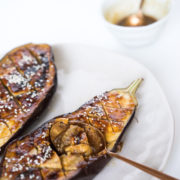







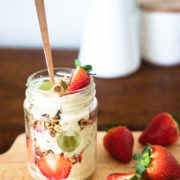











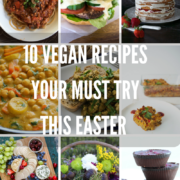


















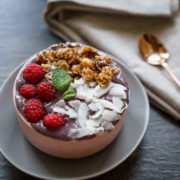



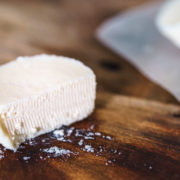



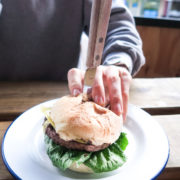








 What’s better than soft and smooth vodka? How about truffle vodka?
What’s better than soft and smooth vodka? How about truffle vodka?

